Toe Fibrosis
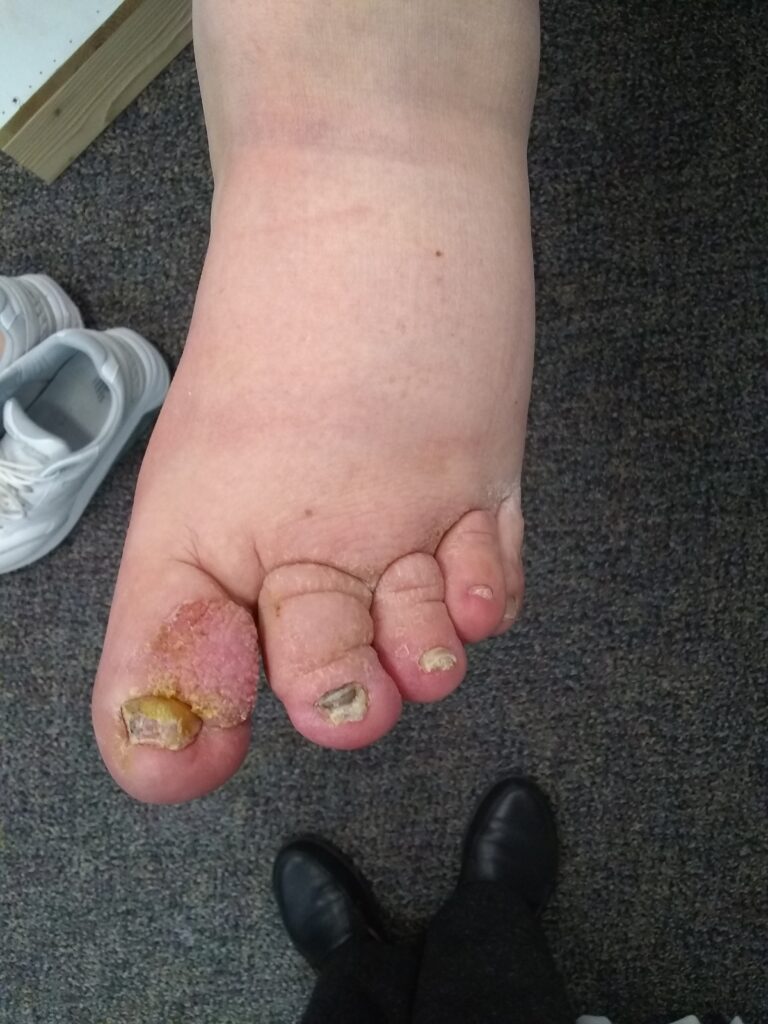
Secondary lymphedema due to obesity and venous reflux. This patient had poorly fitting circular-knit, knee-high hose. They rolled, bunched at the ankle and created pressure wounds. Lymphedema was advanced in his toes, creating lobules. (see below “Obesity and Phlebolymphedema”)
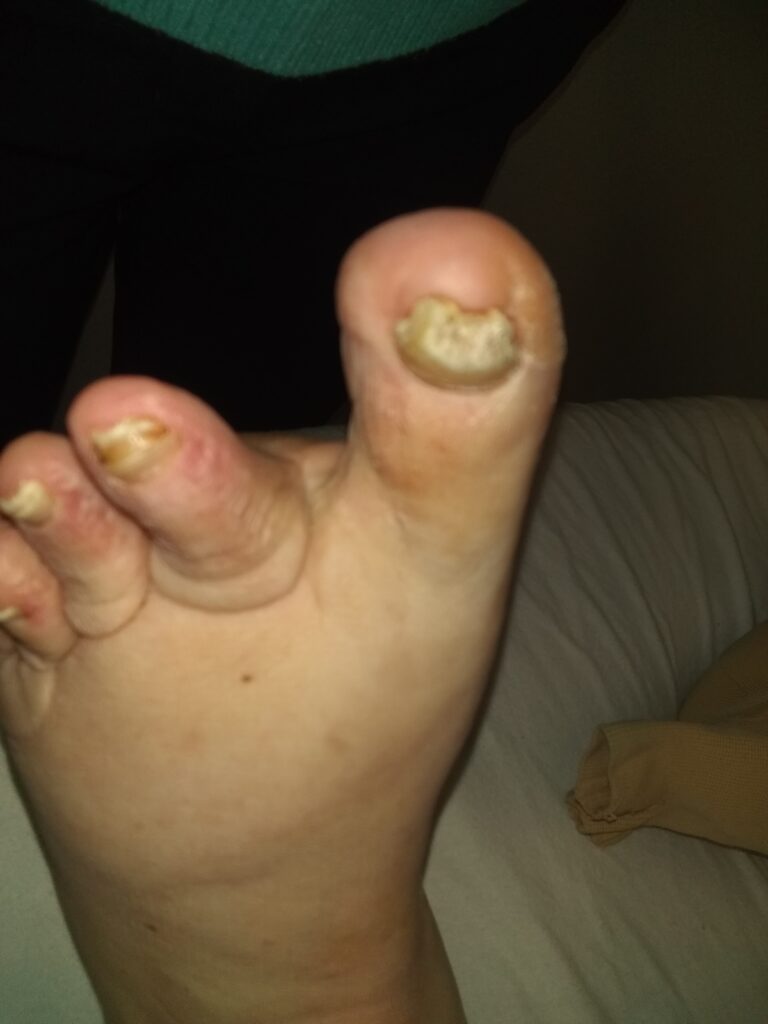
Toe lobules reduced after treatment and wounds healed. Patient was fit with flat-knit, knee-high hose with a toe cap sewn in. This patient also had a night garment. They did not have to use a pump to maintain the volume loss. More volume loss could have been obtained on the top of the foot with a hose insert, but this patient was happy with their status as is. Photo was taken after 3 months and after wearing the new hose.
Toe fibrosis
Secondary lymphedema due to multiple surgeries, immobility and positioning. This patient had childhood polio and spent much of their adult life in a wheelchair with recurring wounds and infections. Toes have a cauliflower-like appearance called papillomatosis. The uneven surfaces create a harbor for bacteria.
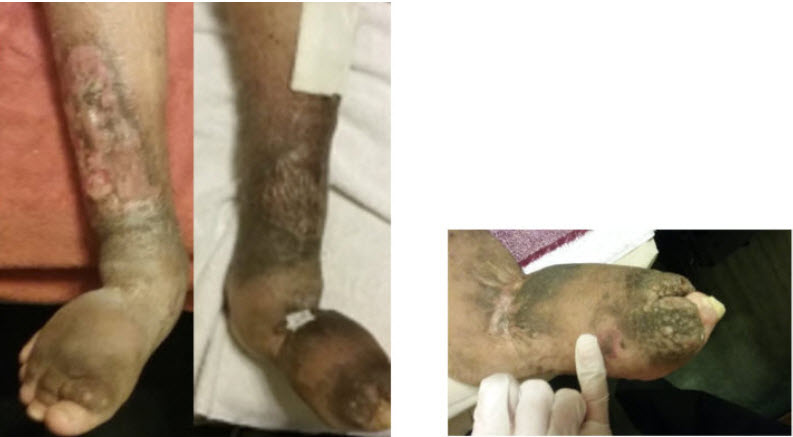
Reduction with manual lymph drainage, compression and foam inserts under bandaging.
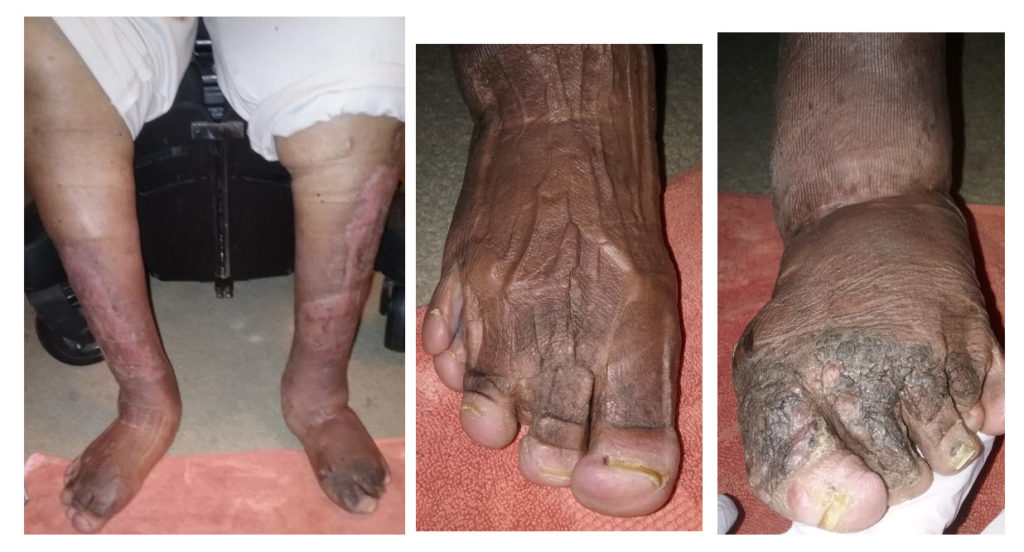
Lipolymphedema

Secondary lymphedema due to obesity and lipedema (a rarely-diagnosed but common fat disorder). Patient also likely had undiagnosed venous involvement. Thigh-high bandaging was advised, but due to incontinence and mobility issues, this patient wanted to bandage to the knee only.
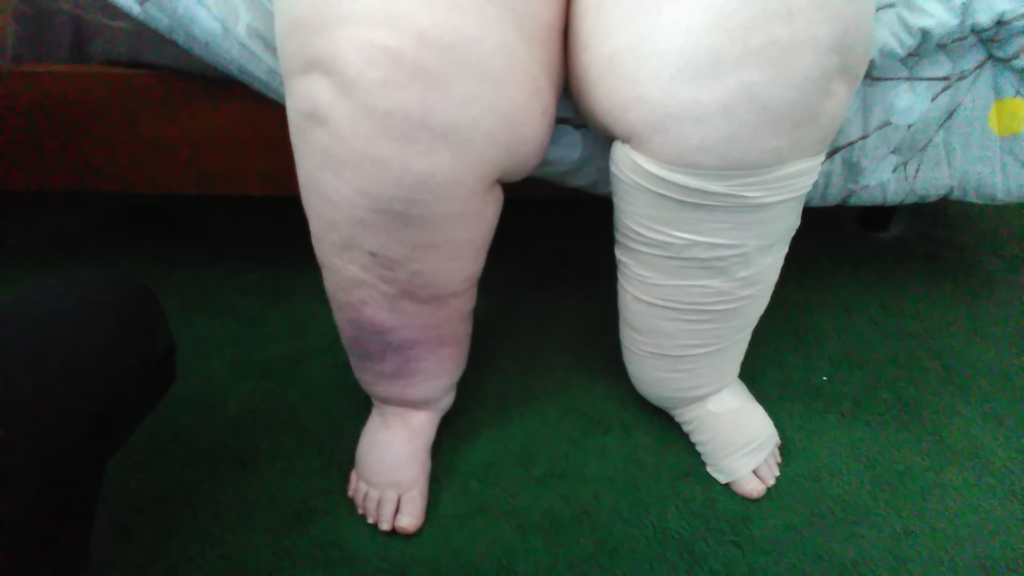
After a few weeks of bandaging. More work is needed on the foot yet. This patient’s story is featured in the blog here.
Ovarian Cancer
Secondary lymphedema due to ovarian cancer. This patient had pelvic lymph nodes removed from both sides and radiation. They also had a knee replacement. The right leg is featured, but the left leg began to swell also. An ultrasound showed venous reflux contributing.
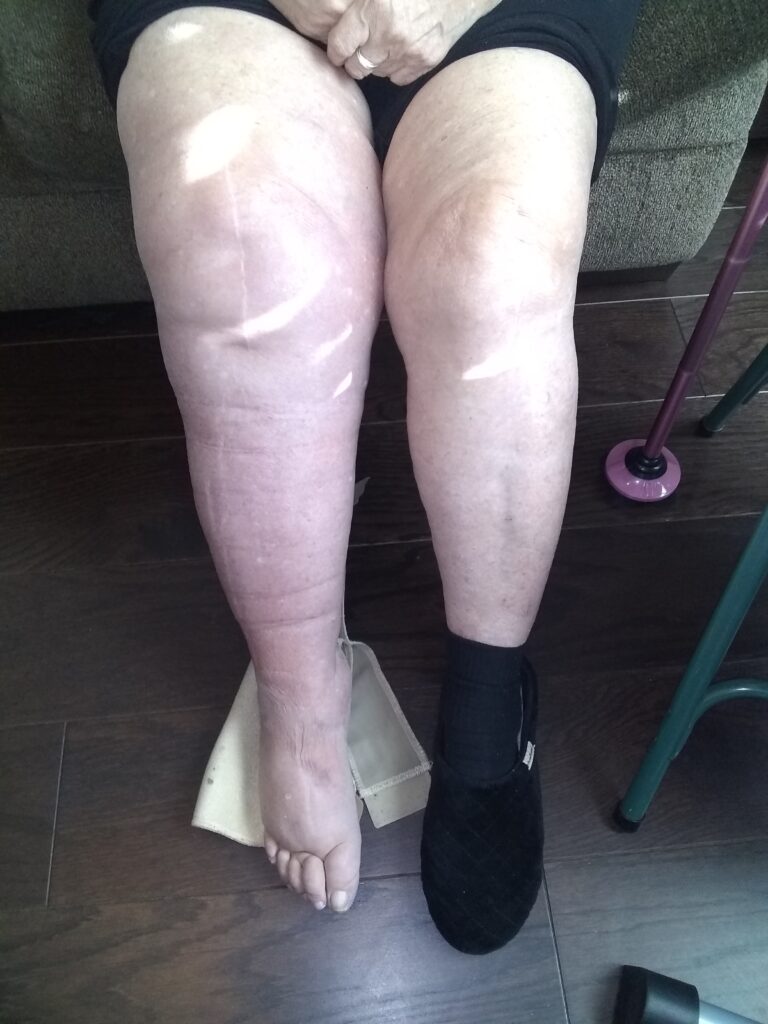
After several sessions of complete decongestive therapy (manual lymph drainage, multi-layer short-stretch bandaging, exercise and skin care). Patient was fit with a custom, flat-knit, thigh-high hose in 32-46 mmHg.

Breast Cancer

Secondary lymphedema due to breast cancer and treatment. This patient had a flare up of lymphedema after a cat scratch and cellulitis infection.

After complete decongestive therapy (manual lymph drainage, multi-layer short-stretch bandaging, skin care and exercise). She resumed wearing her sleeve and glove.
Obesity and osteomyelitis
This patient had a complicated medical history including diabetes, obesity, Charcot foot, neuropathy, leg angioplasty to restore arterial blood flow, venous insufficiency and staphylococcal osteomyelitis (foot bone infection) among others. He had a high risk of amputation and numerous complications.

After months of treatment and working alongside podiatry, his wound tunnels healed and his foot was spared. This patient had not walked or bathed in nearly 12 months. So, therapy extended (for a few years) as we address strengthening, balance, mobility and self-care in addition to lymphedema and reoccurring needs.
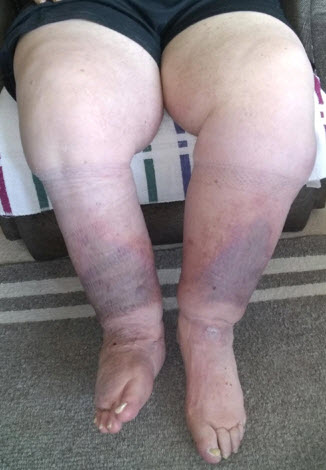
Obesity and Phlebolymphedema

Patient was referred from podiatry due to lymphedema and ankle wounds from poorly fitting hose. The hose caused bunching around the ankles which cut off blood flow and created wounds. (He had lymphedema due to obesity and venous reflux which is called phlebolymphedema.) After reduction through CDT (complete decongestive therapy), he was fit with new hose.

The new hose were custom, flat-knit hose with a toe cap sewn in. The toe cap prevented his toes from refilling & developing lobules again (see “Toe Fibrosis” above for his before and after toe photos).
